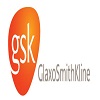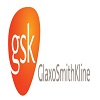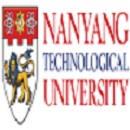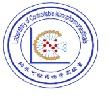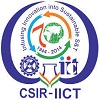Day 1 :
Keynote Forum
Gjumrakch Aliev
GALLY International Biomedical Research Consulting LLC., USA
Keynote: Nanoparticles as Alternate Strategies for Drug Delivery into the Brain
Time : 09:00-09:25

Biography:
Gjumrakch Aliev, President of GALLY International Biomedical Research Institute Inc., San Antonio, Texas, USA. He also hold appointment with the University of Atlanta, Atlanta, Georgia, USA as a Professor of Cardiovascular, Neuropathology, Gerontology, Health Science and Healthcare Administration. He received his MD in 1982, from the Baku Medical University (former USSR) with cum laude. Then he accomplished his PhD in Cardiovascular Diseases from the prestigious Russian Academy of the Medical Sciences, Moscow, Russia in 1988 with cum laude. He received postdoctoral training with Professor G. Burnstock in the University College of the London. He authored and coauthored more than 500 publications in the fields of neurodegenerative diseases research (Alzheimer disease), as well as cardio- and cerebrovascular disease, cancer, and electron microscopy. He is an outstanding teacher, scholar, and a renowned scientist in the area of cellular molecular physiology, and cardiovascular, and neurodegeneration-mediated pathologies and drug development including Alzheimer disease (AD). He is nationally and internationally reputed in his area.
Abstract:
One of the unsolved problems and challenges for the development of new drugs and treatment strategies against neurodegenerative diseases such as Alzheimer Disease (AD) and cancer is the crossing of target drugs into the blood brain barrier (BBB). The use of nanoparticles in drug delivery therapy holds much promise in targeting remote tissues, and as a result many studies have attempted to study the ultrastructural localization of nanoparticles in various tissues. However, there are currently no in vivo studies demonstrating the ultrastructural distribution of nanoparticles in the brain. The present study can be useful for the development of novel drug delivering therapy and useful in understanding the delivery, distribution and effects of silver nanoparticles in AD brain tissue at cellular and subcellular level. Therefore, research interests focuse on investigating the interaction of nanoparticles with tissues and cells become one of the hottest topics. We have recently developed different ways to determine the biological effects of nanoparticles in vivo and in vitro by utilizing animal models of human diseases. Our goal is to not only elucidate the pathogenic mechanisms underlying the nanoparticles\' effects, but also to discover potential new drug development strategies. The results from the current study showed that the intraperitoneal injection of silver nanoparticles in the brain leads to leaking on the inter-endothelial contact and luminal plasma membrane, thus elucidating the possibility of penetrating into the most affected areas in the Alzheimer brain (vascular endothelium, perivascular, neuronal and glial cells). Moreover, our results also suggest that the silver nanoparticles reached the brain and were found in hippocampal areas, indicating that they can be conjugated and used to deliver the drugs into the cell cytoplasm of the damaged brain cells. These observations indicate the potential possibility the specific delivery of drugs to posttraumatic brain injury, tumor and animal model that mimics human neurodegeneration and cancer. In another of our in vivo studies, we are using classical biochemistry, cell biology, and morphology techniques in conjunction with more modern methods, such as SEM/TEM SED X-ray elemental analysis and NMR studies of protein structure and dynamics, macromolecular interactions, mechanistic enzymology, and computational analyses and modeling, in order to determine the exact nature of the relationship between the nanoparticles and the underlying tissue.
Keynote Forum
Hiroshi Maeda
Sojo University, Japan
Keynote: Toward full understanding of the EPR effect in primary and metastatic tumor, and issues of heterogeneity: For tumor selective delivery and imaging using nano-particles
Time : 10:15-10:45

Biography:
Hiroshi Maeda is a world renowned expert in macromolecular therapeutics. He created the world first polymeric-conjugate drug, SMANCS, approved for treatment of hepatoma in Japan. Consequently, he discovered the concept of EPR effect of macromolecular-drugs, ubiquitous mechanism for solid tumor selective targeting of polymeric drugs. He received MS, University of California, Devis, Fulbright student, Ph.D., M.D., Tohoku University. He published more than 450 papers in reputed journals. He was awarded Lifetime-Achievement-Award at Royal-Pharmaceutical-Society, Princess-Takamatsu-Award in Cancer Research, Tomizo-Yoshida-Award, highest award of Japan-Cancer-Assoc., and also selected as most cited influential scientist in pharmacology by Thomson Reuters 2014, and H-index of 89.
Abstract:
Tumor selective targeting using macromolecular drugs was started when poly (styrene-co-maleic acid) was conjugated to protein (NCS) forming SMANCS in 1979. We then investigated most biocompatible plasma proteins, and synthetic polymers of various sizes for tumor uptake: We found >40KDa-polymers were selectively taken up into the tumor: This tumor selective uptake phenomenon was coined EPR (enhanced permeability and retention) effect of solid tumors in 1986: The EPR reflects architectural defect of tumor vasculature and excessive production of many vascular effectors as in inflammation, eg. bradykinin, nitric oxide, etc. EPR effect was also demonstrated in metastatic cancers recently. Heterogeneity of EPR in many tumors may be caused by tumor thrombus or suppressed blood-flow. We showed several vascular mediators can augment EPR effect such as NO releasing agents and ACE-inhibitor (eg. enalapril) which potentiates bradykinin. They not only restore vascular flow but also augment EPR effect for macromolecular delivery 2-3 folds. EPR effect will be similarly applied for delivery of fluorescent nanoprobes; it becomes beneficial for novel imaging and photodynamic therapy. Iv injection of fluorescent Zn-protoporphyrin nanoprobes in rat with autochthonous breast cancer, followed by 2-3 times photo-irradiation by endoscope, resulted in complete tumor regression. This advantage is also great value for in vivo tumor detection using fluorescent endoscope. rnThe EPR effect is yet the first step for selective tumor delivery. However, drug translocation to tumor cell-membrane and intracellular target are remaining issues. We will show our state-of-the-art-for these points, utilizing tissue-pH of tumor (acidic), and membrane transporters upregulated in tumors.
Keynote Forum
Damon Smith
Altus Formulation Inc., Canada
Keynote: ACETAFLEX: A Novel Breakable 12hr Extended Release Acetaminophen Formulation
Time : 10:15-10:45

Biography:
Damon Smith is the founder and CEO of Altus Formulation, a Montreal based drug development company. Damon holds a Ph.D in biological chemistry and has over 27 years of experience in start-up to commercialization companies in the UK, Australia and N.America.
Abstract:
Acetaminophen (Paracetamol or APAP) is a low potency analgesic used to treat a range of pain indications. Thus, APAP may be infused intravenously for postoperative pain and combined with codeine or tramadol to treat mild to moderate pain. Best known of APAP’s uses however is the treatment of mild pain where it is available over the counter as immediate release (IR) or extended release (ER) tablets providing up to 8 hours of relief. Despite the long history of this medication APAP, unlike other products in this market, has never been available as a 12hr duration ER tablet. rnrnHere we report the development of a novel breakable extended release formulation of APAP developed using FLEXITABTM technology to address this unmet need. FLEXITAB 12hr controlled release tablets (ACETAFLEXTM) are 750mg bilayer matrix tablets designed to provide both early onset and sustained analgesia. In a placebo controlled 403 patient Ph II human proof-of-concept study to assess the safety and efficacy of the tablets in a postoperative dental pain model, pain intensity difference (PID) and pain relief (PAR) scores were statistically greater for ACETAFLEX compared to placebo beginning at 15 minutes and continuing through 12hrs supporting that the analgesic effect of the tablets was maintained for this period. In addition the study medication was well tolerated with no serious adverse events being reported; one placebo-treated subject withdrew from the study due to an adverse event (emesis). Breaking of the tablets resulted in little to no change in their drug release rate which was also maintained in the presense of ethanol (40% wt/wt) whether intact or divided along the score.
Keynote Forum
Istvan Toth
The University of Queensland, Australia
Keynote: Self-adjuvanting vaccine design to control fertility and prevent infectious diseases
Time : 09:25-09:50

Biography:
Istvan Toth, PhD, DSc is a Chemical Engineer, ARC Australia Professorial Fellow, Chair in Biological Chemistry and Professor of Pharmacy at the University of Queensland. His major research interest these days is drug, vaccine and gene delivery. He is active in research commercialization as one of the key founders of Alchemia (ASX listed), Implicit Bioscience, Neurotide and TetraQ. He has more than 300 peer-reviewed publications and 43 patents. He is the Editor-in-Chief of Current Drug Delivery, and Drug Delivery Letters. He is a Fellow of the Royal Australian Chemical Institute (FRACI) and the Queensland Academy of Science and Art (FQA).
Abstract:
Immunocastration using gonadotropin-releasing hormone (GnRH)-based vaccines has been investigated in rams to control fertility. A GnRH-lipopeptide vaccine (GnRH-LP) including two copies of GnRH, lipids (2-amino-D, L-hexadecanoic acid), and a ram specific T helper epitope, was designed and synthesised. Rams were vaccinated with or without additional adjuvant. In both groups anti-GnRH antibodies were generated. Additionally rams showed a marked decrease in testicular size, providing the basis for an effective immunocastration. The attachment of synthetic lipids to peptide antigens has been shown to effectively increase the immune response to poorly immunogenic peptide antigens. Furthermore, dendritic polypeptides, polymeric nanoparticles, and carbohydrates provide multiple attachment points for peptides. The conjugation of multiple copies of a single peptide to a carrier has been demonstrated to produce higher antibody responses than a single peptide epitope. Therefore, the conjugation of the lipid core peptide (LCP) system (adjuvant) with sugar units (carrier) represents one of the most important strategies currently under investigation for drug delivery. The LCP-system has been demonstrated to adjuvant peptide epitopes from several group A streptococcal (GAS) strains. GAS is one of the most common human pathogens, and causes a wide range of infections, including: acute rheumatic fever, rheumatic heart disease, and acute glomerulonephritis. Opsonic antibodies directed against the surface M protein, a major virulence factor of GAS, mediate protection against GAS infection.
- Track 1: Drug Delivery Technology
Track 2: Novel Drug Delivery Systems
Location: Crowne Plaza New Orleans Airport
Session Introduction
Christophe A Serra
CNRS Institut Charles Sadron, France
Title: Droplet microfluidics: A tool to prepare polymeric microcarriers with complex morphologies for new drug delivery strategies

Biography:
Christophe A Serra is a Professor at the University of Strasbourg teaching at the European School of Chemistry, Polymers and Materials Science (ECPM). He received his MS and PhD degrees in Chemical Engineering from the National Engineering School of the Chemical Industries (Nancy) and Paul Sabatier University (Toulouse), respectively. His researches concern the development of intensified and integrated microfluidic-assisted polymer processes for the synthesis of architecture-controlled polymers and functional micro structured polymer particles.
Abstract:
Microencapsulation is used for the protection of drug, controlled release, reduced administration frequency, patient comfort and compliance. In comparison with conventional techniques for encapsulation, microfluidics offers a new route to precisely control over microcarriers’ size, shape, morphology, composition and thus release properties. Continuous flow off-the-shelves capillaries-based microfluidic droplet generators, assembled within minutes, were used to produce size-controlled and drug-loaded plain, core-shell, Janus and Trojan polymeric microcarriers. A single capillary-based device was employed to obtain either poly (ethyl acrylate) plain microparticles or poly (acrylamide) Trojan microparticles embedded with drug-loaded poly (ethyl acrylate) nanoparticles previously obtained from the nano emulsification of the monomer phase within an elongation flow micromixer. On the opposite, a two capillaries-based device was employed to prepare poly (acrylamide)/poly (methyl acrylate) core-shell and Janus microparticles from the emulsification into droplets of 2 immiscible monomer phases that were downstream polymerized by UV irradiation at 365 nm far away from maximum absorption wave length of drugs thus insuring their integrity. This lecture proposes to study the production and the release properties of these microcarriers as well as the subsequent new release strategies (e.g. sequential, synergetic, nanoparticle delivery to GIT etc.) arising from these uncommon morphologies. It will be demonstrated how operating parameters (fluids’ flow rate, nature of the monomer, concentration of the surfactant etc.) can affect the size and the morphology of the polymeric microcarriers and how to tune the sustained release of a single API or 2 incompatible APIs encapsulated into a single microparticle.
Yan He
Sanofi Aventis Group, USA
Title: Amorphous solid dispersions: Utilization and challenges in drug discovery and development

Biography:
Yan He received her Ph.D degree in pharmaceutical sciences from the University of Arizona in 2005 with Dr. Samual H. Yalkowsy as her mentor. She has over ten years of industry working experience in two top pharmaceutical companies. She is currently working as a Principle Research Investigator in Sanofi. She has published nine papers in peer reviewed journals and the Handbook of aqueous solubility data in two versions. She has been serving as a Scientific Advisor to the Journal of Pharmaceutical Sciences.
Abstract:
Amorphous solid dispersion (ASD) can accelerate a project by improving dissolution rate and solubility, offering dose escalation flexibility and excipient acceptance for toxicology studies, as well as providing adequate preclinical and clinical exposure. The prerequisite physicochemical properties for a compound to form a stable ASD are glass forming ability and low crystallization tendency, which can be assessed using computational tools and experimental methods. The experimental polymer excipient screening techniques are discussed. Improved technologies for polymer screening with minimal quantity of drug substance, and the scalability of ASD from bench to commercial are reviewed. Considerations of in vitro evaluations, preclinical animal selection, and the translation of the preclinical results to clinical studies are also discussed. Better understanding of how polymers improve the stability of the amorphous phase in the solid state and how ASD improves bioavailability have facilitated the applications of ASD ranging from discovery research to preclinical development and further to commercialization. With the understanding of how ASDs are currently used in the pharmaceutical industry and what challenges remain to be solved, ASD can be applied to solve drug formulation problems at given research and development stages.
Reinhard Gabathuler
biOasis Technologies Inc., Canada
Title: Development of new protein vectors for the delivery of large therapeutic compounds to treat CNS disorders

Biography:
Gabathuler obtained his PhD in Plant Biochemistry at the Université de Lausanne, Switzerland, in 1982, and completed postdoctoral studies at the University of Washington, Seattle. Over the years, he has held various research positions at the Swiss Institute for Experimental Cancer Research, Lausanne; the Ludwig Institute for Cancer Research at the Karolinska Institutet, Stockholm, Sweden; and the Biotechnology Laboratory of the University of British Columbia, Vancouver, Canada. His research on new vector for delivery of therapeutics to the brain led to the creation of Synapse Technologies Inc., where he began as Vice-President Research (1998). The company was later acquired by BioMarin Pharmaceutical Inc., where Dr Gabathuler assumed the position of Vice President of Brain Research (2002). Dr Gabathuler joined AngioChem Inc. in 2005 as its Chief Scientific Officer and has applied his extensive knowledge in biochemistry, cell biology, and immunology to directing the R&D programs, advancing the company’s product ANG1005 to IND application and clinic. He joined biOasis Technologies Inc. in 2010 as its Chief Scientist, the company is developing a new peptide vector, Transcend (MTf, p97) and its second generation the MTfpep, for the brain delivery of biologics. Since 2013 he is also the President of a new biotechnology company, bioMmune Technologies Inc., concerned with the discovery and development of new therapeutics to restore immune-recognition of tumor cells and to modulate the activity of the immune system.
Abstract:
The central nervous system (CNS) is a sanctuary protected by barriers among them the blood-brain barrier (BBB). The BBB is formed by the specific nature of the endothelial cells of the brain capillaries only allowing brain access to nutrients necessary for brain cell survival and function. These properties of the BBB result in the incapacity of therapeutic compounds small and large to reach the brain at therapeutic concentrations. Various strategies are now being developed to enhance the amount and concentration of these compounds in the brain parenchyma. The development of new technologies such as peptide vectors will achieve the delivery of active agents in therapeutic concentration across the BBB to treat brain diseases such as cancer or neurodegenerative disorders. BiOasis Technologies Inc is dedicated to the development of new platform technologies for the delivery of therapeutics in the brain. The use and development of new active proteins or peptides for drug brain delivery using physiological approaches will be presented. BiOasis Technologies is developing a new vector, Transcend or also known as melanotransferrin (MTf) and its second generation vector MTfpep for the delivery of biologics across the BBB. The application of the MTfpep vector for the delivery of lysosomal enzyme, antibodies and nucleic acids such as siRNA will be presented. We have demonstrated that the MTfpep vector associated to antibodies and to siRNA can deliver a therapeutic concentration of active compounds in the CNS. These studies demonstrate that Transcend can be used as a vector for the transport of biologics across the BBB and capable of shuttling therapeutic levels of a variety of compounds from small anti-cancer agent to larger biologics such as antibodies and nucleic acids across the BBB for the treatment of neurological disorders.
Byeongwoon Song
University of California, Davis, USA
Title: Biocompatible Polymeric Assembly as a HIV Drug Delivery System

Biography:
Byeongwoon Song completed an undergraduate degree from Seoul National University and a Ph.D. degree from Columbia University. He was a postdoctoral fellow and a research associate at Harvard Medical School. He served on the faculty at Emory University before joining UC Davis. His research focuses on virus-host cell interactions, lipid homeostasis, and the design of polymeric drug delivery systems. He has published a number of papers in reputed journals and has been serving as an editorial board member on several journals.
Abstract:
HIV infection and its associated diseases continue to increase despite the progress in our understanding of HIV biology and the availability of a number of antiretroviral drugs. Current HIV treatment regimens require a combination of antiretroviral drugs to be taken at least daily for the remainder of a patient’s life. Adherence remains a significant factor in the success of HIV therapy. A drug delivery system that allows sustained drug release could reduce the medical burden and costs associated with medication non-adherence. Here, we describe a novel supramolecular assembly that contains an anionic polymer hyaluronic acid (HA), cationic polymer poly-L-lysine (PL), and anionic oligosaccharide sulfobutylether-beta-cyclodextrin (SBECD). Physicochemical analysis suggested that HIV reverse transcriptase inhibitors Zidovudine and Lamivudine were successfully encapsulated into an amorphous polymer assembly in a non-covalent manner. Raman microanalysis suggested that the cyclodextrin SBECD contributed to homogeneous incorporation of the antiviral drug into the polymer assembly. Viral inhibition and in vitro drug release studies suggested that the supramolecular assemblies loaded with HIV drugs exhibited potent antiviral activity and maintained sustained drug release. A novel drug delivery formulation described in this study could facilitate our efforts to reduce the morbidity and mortality associated with HIV infections and could be utilized in the design of therapeutic approaches for other human diseases.
Mariusz Skwarczynski
University of Queensland, Australia
Title: Conformational epitopes-based lipopeptide vaccines against Schistosoma mansoni and Necator americanus

Biography:
Abstract:
Hookworms (including Necator americanus) infect more people than HIV and malaria combined, predominantly in third world countries. Human blood fluke (Schistosoma mansoni) also infects millions of people worldwide. Both infections are one of the most important health problems in developing countries. Treatment of diseases related to the infections with chemotherapy have limited efficacy and re-infections after treatment are common. The development of vaccines for these infections could substantially reduce the global disability associated with these parasites. Two proteins crucial for pathogens feeding were chosen as antigens for vaccine design: hemoglobin digestion cascade protease Na-APR-1 from hookworm and cathepsin D hemoglobinase (Sm-CatD) from Schistosoma. In the case of both antigens high-yield production of them (eukaryotic proteins) was problematic. This prompts us to propose peptide-based strategy for the vaccines development. Thus, appropriate B-cell epitopes have been identified and conjugated to self-adjuvanting lipid core peptide (LCP) systems to avoid using generally toxic classical adjuvants. Produced conjugates were formulated into nanoparticles under aqueous conditions. Several series of vaccine candidates were tested in mice model.1-4 The lead candidates induced robust neutralizing humoral immune responses which strongly depended on conformational properties of the peptide epitopes incorporated into conjugates. The use of potentially toxic adjuvants was eliminated and vaccine candidates showed generally good safety profile. These findings are particularly encouraging for the development of single vaccine which can target both helminthiases.

Biography:
Yingqing Ran obtained her PhD in 2004 from University of Arizona, College of Pharmacy under professor Samuel Yalkowsky. She is current Sr. scientist in Small Molecue Pharmaceutics Group. She has broad experience from drug disovery to development. She has published more than 25 papers in reputed journals.
Abstract:
It is well acknowledged that oral bioavailability of a drug candidate is often influenced by factors such as the permeability, physico-chemical properties, and metabolism of the drug. Among the physico-chemical properties, solubility and dissolution rate are considered critical factors affecting the oral bioavailability. For compound G-F, a potent and selective B-Raf inhibitor with poor solubility and solubility limited absorption at high doses, we evaluated a spray-dried amorphous dispersion (SDD) formulation to improve the solubility. A combination of theoretical solubility prediction and in vitro dissolution were used to predict the in vivo exposure of G-F. The predicted value was found to have good agreement with the in vivo exposure resulted from adminstering the crystalline and amorphous form of G-F to rats. In general, this combined approach demonstrated that the amorphous form of G-F offers an advantage over the crystalline form of G-F in terms of solubility; in vitro dissolution and in vivo absorption that were predictable and were consistent with literature. This systemic approach provides a great value for compound development.

Biography:
Dong Seok Kim is a Biochemist with special interest in Immunology and Cancer Biology. He holds Ph. D. degree in Biochemistry, specializing in caner-integrin signaling from Yonsei University, Seoul Korea. His research focused on the ubiquitin-mediated regulation of protein expression during T cell activation in NCI, Bethesda MD. He is currently working on new drug development in Peptron and developing therapeutic strategies for neurodegenerative diseases in NIA, Baltimore MD as a collaborator.
Abstract:
Exenatide, a glucagon like peptide-1(GLP-1) analogue, has been developed and widely used in clinic as a treatment for type 2 diabetes. Accumulating data also suggest that exenatide as well as other Glp-1R agoinists posess therapeutic potential for the neruodegerative disease such as Alzheimer's disease (AD) and Parkinson’s disease (PD) by neuroprotective and neurotrophic mechanisms, which is investigated in several clinical trials for the treatment of neurodegenerative disorders. SmartDepotTM is Peptron’s proprietary technology for the sustained release (SR) microsphere formulations of various agents to provide once weekly or longer dosing regimens. Peptron is currently developing for type 2 diabetes a SR-Exenatide (once every two weeks), PT302, which is evaluated in a phase 2 clinical trial. In addition, the therapeutic potential of Exenatide in neurodegenerative disorders is being evaluated in various disease models such as AD, PD, HD and TBI. Previously, Exenatide, delivered by a micro-osmotic pump, showed a neuroprotective effects in mild TBI (mTBI) animal model. In this study, the pharmaceutically acceptable sustained release (SR) formulation of exenatide, PT340, was examined in the mTBI mice model. mTBI mice displayed deficits in novel object recognition, while PT340-treated mTBI mice performed similar to sham. These data suggest a strong beneficial action of PT-340 in treating mTBI. Convinient dosing regimen of SR-Exenatide will provide additional benefits for the treatment of the neurodegenerative diseases as well as type 2 diabetes: maximizing therapeutic effects, increasing drug compliance, and extending patent coverage.
Alessandro Parodi
Houston Methodist Research Institute, USA
Title: Cellular vectors to enhance the pulmonary delivery of chemotherapeutics

Biography:
Alessandro Parodi completed his PhD at University of Genoa in pharmacological and cosmetic sciences. His post-doctoral studies was initially performed at Advanced Biotechnology Center (Genoa) investigating tumor angiogenesis and the impact of carbon nanostructures on endothelium. He then moved to the Houston Methodist Research Institute (HMRI-Houston) where he distinguished himself in the designing and the development of biomimetic carriers to target inflammatory disease. Currently he is an instructor of the department of Regenerative Medicine at the HMRI and he is author of more than 20 papers and 1 patent describing Cellular Vector technology for the treatment of pulmonary cancer lesions.
Abstract:
In the last decades, great efforts have been dedicated to developing drug delivery systems that are able to accumulate at the pathological site and locally deliver their payload while sparing off-site organs. Oncological diseases, in particular, are the major targets of the scientific community as current treatments are affected by significant systemic toxicity (chemotherapy) and/or biodegradation (biological therapeutics). Current technologies developed for systemic treatments can exert their therapeutic effects only if the cancer lesions are characterized by a targetable vasculature. On the other hand, cancer lesions can be very heterogenous in their blood supply (particularly during metastatic spreading) and, as a result, tumor vasculature can iniquitous or completely absent. This is the case of pulmonary metastases that can occur at different stages of tumor progression and are capable of spreading to many different locations of the organ. For this reason, we hypothesize that a delivery system conceived to target the whole lung could be more effective than carriers designed to target only the cancer lesion. Cellular Vectors (CELVEC) are immune cells isolated from the whole blood, overloaded with chemotherapy (Doxorubicin), and enabled of sustained release for several hours after drug loading. After intravenous injection, they showed 100% accumulation in the dense capillary network of the lungs and they reside in this organs for several hours before they are cleared and digested in liver and spleen. In comparison to free drug administration, they showed an increased concentration of the drug within the lung and enhanced therapeutic efficacy towards cancer lesions.
Amanda E. Brooks
North Dakota State University, USA
Title: Evaluation of polycaprolactone encapsulated vancomycin for controlled drug delivery from a bone void filling putty

Biography:
Amanda Brooks completed her PhD in 2006 from the University of Wyoming and postdoctoral studies at the University of California San Diego and the University of Utah. She is currently an Assistant Professor in Pharmaceutical Sciences at North Dakota State University. She has published more than 35 peer reviewed papers and routinely serve sas an ad hoc reviewer for a variety of journal and granting agencies.
Abstract:
The advent of Total Joint Replacements (TJR), specifically total hip and total knee replacements, has significantly relieved pain and improved quality of life for over a 500,00 Americans per year; however, up to 10% of implants will prove clinically unsuccessful in restoring function and quality of life, requiring a revision procedure to 1) remove the original device and infected bone 2) replace components, and 3) restore lost bone. Although only 1-3% of these initial failures can be attributed to periprosthetic joint infections (PJI), chronic PJI accounts for recurrence rates at revision that skyrocket to a staggering 15-20%. Unfortunately, clinical treatment strategies rely on systemic antibiotic delivery to bone, which is hampered by physiology. Alternatively, implanted local delivery systems such as Antibioitc Eluting Bone Cement provide inadequate pharmacokinetics that inadvertently promote the development of antibiotic resistant bacterial populations. Thus, chronic PJI and the advent of antibiotic resistance could be better addressed by integrating and exploiting local, extended duration antimicrobial delivery directly from malleable osteoconductive bone void filling (BVF) materials. Under these parameters, a resorbable, antibiotic eluting bone void filling putty has been developed and various polymer formulations have been evaluated. By incorporating vancomycin encapsulated in biocompatible and biodegradable PLGA nanoparticles, the duration of effective local vancomycin concentrations released from a patented bone void filling putty can be extended, with the duration of drug release dependent on the ratio of PLA to PGA subunits.
Omathanu Perumal
Professor & Head, Department of Pharmaceutical Scienes South Dakota State University Founder & Chief Scientific Officer Tranzderm Solutions USA
Title: Protein Nanocarriers For Drug Delivery Applications

Biography:
Omathanu Perumal is a Professor and Head of Department of Pharmaceutical Sciences at South Dakota State University. He has over 18 years of experience in developing new drug delivery systems. His group has developed natural protein based drug delivery platform for various drug delivery applications. In addition his group has developed novel topical and transdermal drug delivery approaches. Dr. Perumal has published close to 50 peer reviewed publications, and delivered over 100 presentations. He has four issued patents and two pending patent applications. Dr. Perumal is the founder and Chief Scientific Officer of Tranzderm Solutions Inc. He serves as the editor-in-chief of Journal of Biomedical Nanotechnology (Impact factor: 5.338). He is the recipient of Patricia Walker Skin Cancer Research Award from Skin Cancer Foundation, F.O. Butler Award for excellence in research, Distinguished Researcher award and Intellectual Property & Commercialization award from South Dakota State University.
Abstract:
Protein biopolymers are attractive materials for developing nanoparticulate based drug delivery systems. To this end, food-grade protein biopolymers offer many advantages including biodegradability, demonstrated safety as food materials, and the amino acids can be used for further chemical modification to optimize drug delivery systems. Our research focuses on core-shell nanoparticles developed using zein, a water-insoluble corn protein as the core and hydrophilic/amphilphilic milk proteins, polymers or lipids as the shell. The focus of our research is to understand the influence of core-shell composition on drug delivery by oral and non-oral routes of drug administration. The presentation will focus on the development and in-vitro as well as in-vivo characterization of protein core-shell nanoparticles by oral, topical and intravenous administration for a wide variety of drugs. The talk will present the application of the core-shell nanoparticles for enhancing the water solubility, membrane permeability, drug stability, sustain drug release and improve drug bioavailability by various routes of drug administration

Biography:
Stefaan De Koker is a bio-engineer with a PhD in Biotechnology obtained at Ghent University. From 2012, he has been leading a research team working on the design of novel vaccines that elicit potent cytotoxic T cell responses against cancer and HIV. Currently, he has (co)-authored over 45 A1 papers at the interface between Materials Sciences and Immunology. His research has been published in journals such as Nanoletters, Angewandte Chemie, ACS Nano, Journal of Immunology and PNAS.
Abstract:
Cytolytic T cells (CTLs) have a unique potential to destroy viral infected cells and cancer cells. Vaccination strategies that can elicit CTLs are thus actively persued within the cancer and HIV immunotherapy field. Because induction of CTLs requires antigen to be processed in the cellular cytosol, conventional vaccines relying on the injection of recombinant protein antigens generally fail to evoke CTL responses. To acquire access to the cytosolic route of antigen presentation, we decided to use cell penetrating peptides (CPPs) as carriers for an antigenic cargo. CPPs are small peptide sequences inspired by the protein sequences viruses use to cross cellular membranes. CPPs typically contain multiple cationic amino-acid residues (lysines or arginines) and/or display an amphipatic 3-D organisation. Two different approaches were persued. In a first approach, we used a cationic, amphipathic CPP to deliver antigenic information to the immune system in the format of an mRNA encoding a model antigen. Through its cationic residues, the CPP condensed the mRNA into nanoparticles that allowed antigen expression inside the cytosol of dendritic cells. These CPP-mRNA nanoparticles were superior in evoking CTLs when compared to conventional lipid based mRNA vaccination. In a second approach, we used CPPs to deliver peptide epitopes to the immune system. Again, RNA was used as scaffold for nanoparticle assembly. In this case, the RNA did not encode an antigen, but potently activated innate immune responses. The thus obtained nanoparticles were extermely potent at inducing CTLs and inhibited tumor growth in a pre-clinical murine melanoma model.
Matthew N Bahr
GlaxoSmithKline, USA
Title: The use of high throughput experimentation to enable a deeper understanding of drug behavior

Biography:
Matthew completed his Master of Engineering in Pharmaceutical Manufacturing from Stevens Institute of Technology. He is currently pursuing a part-time PhD in Pharmaceutics from the University of the Sciences in Philadelphia, PA. He is an Investigator at GlaxoSmithKline in King of Prussia PA, and specializes in pharmaceutical research using High Throughput Automation platforms. He has published several papers, and has presented posters and presentations at various conferences.
Abstract:
Performing drug discovery and research on a pharmaceutical compound is a labor-intensive, costly, and time-consuming process. A large portion of that work involves investigating drug behavior in various liquid media. Through the implementation of High Throughput Experimentation, we are able to deploy robotic automation systems to manage screening of a wide variety of experimental conditions with multiple replicates. The conditions allow a researcher to broaden the understanding of the drug’s behavior, and the replicates provide statistical significance. In this talk, we will discuss how automation systems can improve our understanding of drug solubility in a wide variety of liquid systems. These experiments will highlight how a great deal of information can be gained by using a small amount of material. The experiments are performed under various temperature conditions, and the use of replicates helps to target when outliers need to be further investigated. These experiments have also been used to investigate how an active pharmaceutical ingredient interacts with excipients in bio-relevant media to aid in formulation development decisions. Because these experiments are conducted with an automation system, the robot performs the majority of the work, which allows the researcher to focus on data analysis. And because a 96-well plate format is used, a large volume of experimental conditions can be studied in a relatively short period of time.

Biography:
Saha received my PhD degree in Bioinformatics jointly from the University of Arkansas for Medical Sciences University of Arkansas at Little Rock, in Little Rock, Arkansas. Early in my life, I obtained a Bachelor of Science degree in Chemistry from The University of Calcutta in Kolkata, India and in 2006, I completed my Master of Science degree in Bioinformatics from The West Bengal University of Technology in Kolkata, India I have established a scientific profile through high-caliber publications in peer-reviewed journals and conference presentations throughout my career so far. Presently, I am a post-doctoral fellow in Computational Biologist at GlaxoSmithKline (GSK) pharmaceuticals working in the area of microbiome. My interests lie broadly in the area of Computational Biology, Computational and Structural Chemistry, Structure based drug design, Immuno-informatics and Microbiome research.
Abstract:
Tumor associated carbohydrate antigens (TACAs) are a class of glycans with important structural and signaling functions playing a major role in cell proliferation, differentiation, and apoptosis relevant to oncology. Tumor cells expressing TACAs influence prognosis and survival of cancer patients. We have used structure-based approaches to study antigen-antibody interactions in the tumor micro-environment and designed a peptidyl ligand that mimics the molecular topology of TACAs even though they are chemically dissimilar but functionally equivalent molecular structures. The work on antibody-TACA interactions suggests that in designing antibodies, careful consideration should be made in using mutations that enhance the rigidity of an antibody. Our work also suggests that electrostatics play a major role in the recognition of the model antigen examined. Discrimination against wanted targets through repulsive electrostatic interactions might be more fruitful than a strong optimization of target binding. Increased specificity toward one target leads to decreased affinity toward others. Models for TACA targeting reagents are typified by TACA reactive monoclonal antibodies, lectins, and perhaps oncolytic viruses that target sialylated receptors. Peptides reactive with TACA may, in particular, be interesting carbohydrate binding agents, forming the basis of novel drugs that combine the advantages of antibodies and small molecules. We have developed a peptidyl ligand that binds to the TF or T antigen (Galβ1- 3GalNAc). The designed peptidyl ligand was observed functionally to mediate cell signaling of TF expressing cell lines, suggesting that TF antigens might be functionally interesting.
Terry W J Steele
Nanyang Technological University, Singapore
Title: Self assembled photoadditives allow stop and go pharmacokinetic.

Biography:
Terry Steele completed his PhD from the University of Minnesota (2006) and postdoctoral studies from Philipps Marburg University and Nanyang Technological University, where he was promoted to Assistant Professor in 2011. He has published more than 30 papers in reputed journals and has interests in on†demand adhesives, stimulated drug delivery, smart biomaterials, microfluidics, medical implants, and plasma related surface functionalizations.
Abstract:
Biodegradable polyesters are widely applied in the as drug release matrices. However, once manufactured or implanted their release kinetics tend to be fixed with little modulation possible for optimal drug concentrations in the local environment. Various polyester thins have been fabricated into thin films (~50 μm thick) with additives of photocatalytic ZnO nanoparticles, doped LiYF4 upconversion nanoparticle, or combination thereof and irradiated with near infrared (980 nm) laser diodes to induce photocatalysis. Selfâ€assembly of ZnO and LiYF4 nanoparticles allows drug release kinetics enhanced up to 500x more than nonâ€irradiated, polyester films. Drug release kinetics are halted once NIR light is removed, allowing feedback controlled, stop and go drug release therapies.
Franciska Erdo
Pazmany Peter Catholic University, Hungary
Title: Methodological positioning of transdermal microdialysis technique for investigation of drug penetration across the cutaneous barrier

Biography:
Franciska Erdo completed her PhD from Semmelweis University of Medicine, Budapest. She has several years of experience as a scientific researcher in research institutes, in the pharmaceutical industry, at the academy and also at a biotechnological company (contract research organization). She spent four years in the basic research in Germany at the Max-Planck Institute for Neurological Research, Cologne and at Charité University, Berlin. Currently she is a head of laboratory and faculty member at Pazmany Peter Catholic University, Faculty of Information Technology and Bionics. She has published more than 35 papers in reputed journals.
Abstract:
In vivo microdialysis is a widely used technique for monitoring the biochemical changes in the extracellular fluid in a target tissue. There are many types of this methodology depending on the purpose of application (pharmacokinetic/pharmacodynamic studies; biomarker studies, membrane transporter and drug-drug interaction studies etc.), on the target tissue and on the species tested. The first applications were focused on the brain and the neurotransmitters in rodents. Lateron many other organs were tested including the skin in different species. During the last decades transdermal microdialysis technique developed very fast and the number of papers reporting its application in drug research and development increased dramatically. The major advantage of dermal microdialysis is that the preclinical and clinical investigations of topical drug administration can be performed in parallel because its minimally invasive characteristics. For examination of dermal drug delivery and the influence of different penetration enhancer techniques or additives, furthermore comparison of new drug formulations are all possible by skin microdialysis method. Multiple-probe microdialysis approaches make it possible to study free, pharmacologically active drug concentrations in different organs or in the blood simultaneously with the cutaneous monitoring. This modell will be presented, critically evaluated and positioned in the toolbox of different in vivo and in vitro methods for testing dermatopharmacokinetic profile of topically or systemically administered test compounds.
Padma Narayan
Dow Chemical Company, USA
Title: The importance of polymers and surfactants in drug delivery

Biography:
Padma Narayan is an R&D Leader for the Industrial Solutions Product R&D portfolio at Dow Chemical. She has developed products for the agriculture, personal/home care, oil & gas, and coatings industries. She has previously worked at Johnson & Johnson and Pfizer in pharmaceutical formulation development covering oral, transdermal, and injectable dosage forms. Padma received her PhD in chemical engineering at Drexel University and her Bachelors in Chemical Engineering at Villanova University. She is an advisor to editors of Journal of Pharmaceutical Sciences, and active in American Institute of Chemical Engineers. She has over 12 publications and 15 conference presentations.
Abstract:
The challenge of delivering poorly water soluble drugs, with respect to their targeted dose, is prevalent, despite the discovery of new molecules with higher potency. Methods to improve the solubility and bioavailability of drugs have become a paramount element of formulation design and scaleup. Hence various polymers and surfactants have been evaluated as functional excipients which are important formulation components to combat the problem of low bioavailability. A thorough understanding of these excipient properties is highly important to select the most optimal polymer and/or surfactant to improve the performance of the dosage form and drug availability. Important performance factors of polymers include glass transition temperature (Tg), thermal stability, dissolution profiles in organic solvents, and an optimal solubilization of the active pharmaceutical ingredient (API) in the polymer matrix. Formulation techniques that can improve the water solubility of drugs involve amorphous dispersions, improved wetting agents, and ‘spring and parachute’ type approaches where the drug is prevented from precipitating inside the GI tract, or kept stable as amorphous within the dosage form. Polymers that can be used for these applications range from polyvinylpyrrolidone, polyethylene glycols/ oxides, cellulosics such as hydroxypropyl methylcellulose, acrylates, and various copolymers. Surfactants can vary from nonionic materials based on alkylene oxide derivatives, and ionic based on sulfonic acid, quarternary amine, or acrylate functionalities. This talk will provide an overview of designing the best systems with surfactants and polymers to solubilize drugs and improve their bioavailability.
Maria Principia Scavo
University of Kentucky, USA
Title: Multistage vector delivery of sulindac and silymarin for prevention of colon cancer

Biography:
Maria Principia Scavo has completed her PhD at the age of 32 years from University of Bari (Italy) and postdoctoral studies from University of Bari and Methodist Research Institute. She is Researcher Associate at Markey Cancer Center, University of Kentucky and she has published more than 17 papers in reputed journals.
Abstract:
Familiar adenomatous polyposis (FAP) is a genetic condition secondary to germline mutations in the APC gene with a prevalence of one in 10,000 newborns. Patients with this disease will eventually develop colorectal cancer and other cancers of the digestive tract, which typically present themselves in the mid-teens [1]. Prophylactic surgery of the colon is actually the only current standard of care, to avoid malignancy, as long-term exposure to chemo preventive agents such as sulindac (a non-steroidal anti-inflammatory drug) and silymarin (phytoestrogen), usually used to prevent polyps formation in this type of patients, is not feasible. Here, we have used a modified porous silicon-based multistage vector (MSV), rationally designed to deliver therapeutic agents to neoplastic tissue to delivery sulindac and silymarin [11, 12]. Furthermore, the surface of the MSV can be coated with antibodies and other targeting agents that bind to tumor vasculature or neoplastic cells [22, 23]. In this study, MSVs were loaded with poly (ethylene glycol)-block-poly(ï¥-caprolactone) (PEG-PCL) micelles encapsulating sulindac or silymarin. Preferential binding and internalization of these drugs into colon cancer cells was obtained using a targeting strategy against the protein meprin A, which is demonstrate, and we confirmed in our work, is overexpressed in human colon cancer cells and in the small intestine of ApcMin/+ mice. We propose that this delivery system could potentially be used to reduce drug-induced side effects in FAP patients, thus enabling long-term prevention of adenoma formation.
Yusung Kim
University of Iowa, USA
Title: Locally targeted delivery of a therapeutic agents using temperature-sensitive hydrogel

Biography:
Yusung Kim has completed his PhD in 2007 from Medical Physics Department in University of Wisconsin, Madison. Dr. Kim is a Clinical Associate Professor in Radiation Oncology Department in the University of Iowa. He has published more than 29 peer-reviewed papers and has been serving as a grant reviewer for National Science Foundation (NSF) Cyber-Physics System (CPS) Grant in US and Prostate Cancer Grant in United Kingdom.
Abstract:
Hydrogel is a water-like liquid at room temperature but gels at body temperature. Two US Food and Drug Administration-approved polymers were synthesized. Indium-111 (In-111) was used as the radioactive RT-GEL source. The release characteristics of In-111 from polymerized RT-GEL were evaluated. The injectability and efficacy of RT-GEL delivery to human breast tumor were tested using animal models with control datasets of RT-saline injection. As proof-of-concept studies, a total of 6 nude mice were tested by injecting 4 million tumor cells into their upper backs after a week of acclimatization. Three mice were injected with RT-GEL and 3 with RT-saline. Single-photon emission computed tomography (SPECT) and CT scans were performed on each mouse at 0, 24, and 48 h after injection. The efficacy of RT-GEL was determined by comparison with that of the control datasets by measuring kidney In-111 accumulation (mean nCi/cc), representing the distant diffusion of In-111.
Xing-Jie Liang
Chinese Academy of Sciences, China
Title: NDS with encapsulation and delivery efficiency to overcome tumor chemotherapeutic resistance

Biography:
Xing-Jie Liang has completed his Ph.D at the age of 27 years from National Key Laboratory of Biomacromolecules, Chinese Academy of Sciences and postdoc for 5 years at LCB, CCR, NCI, NIH. He was a Research Fellow at Surgical Neurology Branch, NINDS and an Assistant professor at Howard University. Dr. Liang currently is deputy director of Key Laboratory for Biomedical Effects of Nanomaterials and Nanosafety, CAS and a principal investigator at National Center for Nanoscience and Technology of China. He is current Associate Editors of 《Biomaterials》 and《Biophysics Report》; Advisory editorial board member of 《ACS Nano》; Editorial member of 《Advances in Nano Research》, 《Current Nanoscience》, 《Biomaterials Research》, 《Theranostics》and guest editor of 《Biotechnology Advances》
Abstract:
Chemotherapeutics are still the primary options applicable to cancer treatments, however, the chemo-resistance developed by tumor limits their further clinical application. One way to solve this obstacle is to improve the bioavailability of anti-cancer drugs mostly with poor intracellular accumulation. Various Nanoparticle-based delivery systems (NDS) such as dendrimer, vesicles, liposomes, micelles and inorganic materials are fabricated to greatly enhance their stability and blood circulation period. Meanwhile, these NDS are also widely employed in cancer therapy owing to their improved pharmacokinetics and pharmacodynamics arising from the enhanced permeation and retention (EPR). Because traditional DDSs are poor to enter the cells and release drugs up to effective therapeutic dosage, NDS such as Nanomicelle with small size, high drug loading, controlled and sustained drug release and their potential to overcome drug resistance, a shell/core nanostructure self-assembled by amphiphilic macromolecules, constitutes a promising nanocarrier for efficient chemotherapeutics. Drug-encapsulated nanomicelles were also developed under clinical evaluation. NDS has emerged as an effective strategy for pharmaceutical formulation to deliver payloads into the targeted regions and gained particular attention in biomedical field.
Tais Gratieri
University of Brasilia, Brazil
Title: Liposomal voriconazole (VOR) formulation for improved ocular delivery

Biography:
Taís Gratieri has completed her PhD at the age of 26 years from University of São Paulo, with one-year internship at the Saarland University, in Germany, winning the CAPES national award of Best Thesis of the year 2010 in the area of Pharmacy. Following two years of Postdoctoral studies at the University of Geneva, she is now full Professor at the University of Brasilia. Dr. Gratieri published 32 papers in reputed journals, 10 book chapters, 2 books and has 2 deposited patents in Brazil. In 2013 she received the L’Oreal – UNESCO for the Women in Science Award.
Abstract:
Treating infectious eye diseases topically requires a drug delivery system capable of overcoming the eye’s defense mechanisms, which efficiently reduce the drug residence time right after its administration, therefore reducing absorption. In order to try to surpass such administration issues and improve life quality for patients with fungal keratitis, liposomal voriconazol (VOR) formulations were prepared. Formulations were composed of soy phosphatidylcholine (PC) containing or not 1,2-dioleoyl-3-trimethylammonium-propane (DOTAP) and cholesterol. Liposomes were characterized by their drug entrapment efficiency (EE), drug recovery (DR), average diameter (size) and polydispersivity index (PdI). In vitro mucosal interaction and irritancy levels, ex vivo permeation, as well as the short-term stability were also assessed. Liposomal VOR formulation produced with 7.2:40 mM VOR:PC showed to be the most promising formulation: mean size of 116.6 ± 5.9 nm, narrow PdI (0.17 ± 0.06), negative zeta potential (~ -7 mV) and over 80% of EE and yield, remaining stable for at least 30 days in solution and 90 days after lyophilization. This formulation was classified as ‘non-irritant’ after HET-CAM’s test and was able to deliver about 47.85 ± 5.72 ïg/cm2 of VOR into porcine cornea after 30 min of permeation test. Such drug levels are higher than the minimal inhibitory concentrations (MIC) of several fungi species isolated from clinical cases of corneal keratitis. Overall results suggest VOR can be effectively incorporated in liposomes for potential topical treatment of fungal keratitis. This work was supported by CNPq, CAPES, FAPDF and L’Oreal – UNESCO for the Women in Science Awards.
Shunichi Sato
National Defense Medical College, Japan
Title: Targeted drug and gene delivery by pulsed laser-induced Photomechanical waves

Biography:
Shunichi Sato completed his PhD in electrical engineering at Keio University in 1986. Currently, he is an associate professor at the National Defense Medical College, Tokorozawa, Japan. His interest covers a variety of laser applications to medical treatment and diagnosis, including laser-based molecular delivery, photodynamic therapy, photoacoustic imaging and diffuse reflectance imaging.
Abstract:
We have demonstrated highly site-selective gene transfer and transvascular drug delivery in rodents by using pulsed laser-induced pressure waves, which are called photomechanical waves (PMWs). A PMW is generated by irradiating a light-absorbing material with a nanosecond laser pulse. For gene transfer, PMWs were applied to tissue injected with plasmid DNA or siRNA, enabling efficient targeted gene transfer to various tissues in vivo. Gene therapy experiments were performed by using this method. Adhesion of grafted skin was accelerated by delivering hepatocyte growth factor plasmid DNA to the graft and recovery of motor function was enhanced by delivering siRNAs targeting the intermediate filament proteins to spinal cord injury in rats. We also found that PMWs could selectively enhance the permeability of blood vessels. An Evans blue (EB) solution was injected into the rat tail vein, and a PMW(s) was applied to the skin, muscle and brain. We observed laser fluence-dependent extravasation of EB in the tissues that had been exposed to a PMW(s). Uptake of leaked EB into cells in the extravascular space was also observed in the targeted tissues, indicating the capability for site-specific transvascular drug delivery by using a PMW(s). The results for the brain indicated opening of the blood–brain barrier. Since EB molecules are strongly bound with serum albumin in blood, this method can be applied to macromolecules. The method is currently being applied to gliomas in rats to enhance the delivery efficiency of an antitumor drug.
Arik Dahan
Ben-Gurion University of the Negev, Israel
Title: The solubility-permeability interplay and formulation development of low-solubility drugs

Biography:
Arik Dahan is a professor of Clinical Pharmacology at Ben-Gurion University of the Negev, He holds Ph. D. degree in Pharmacy and published more than 20 Research articles in reputed national and international journals.
Abstract:
While each of the two key parameters of oral drug absorption, the solubility and the permeability, has been comprehensively studied separately, the relationship and interplay between the two has been largely ignored. For instance, when formulating a low-solubility drug using various solubilization techniques, do we know what is the concomitant effect on the apparent permeability? Permeability is equal to the drug's diffusion coefficient through the membrane times the membrane/aqueous partition coefficient divided by the membrane thickness. The direct correlation between the intestinal permeability and the membrane/aqueous partitioning, which in turn is dependent on the drug's apparent solubility in the GI milieu, suggests that the solubility and the permeability are closely associated, exhibiting certain interplay between them, and the current view of treating the one irrespectively of the other may not be sufficient. In this lecture, I will describe the research have been done thus far, and present new data, to shed light on this solubility-permeability interplay. It has been shown that decreased apparent permeability accompanied the solubility increase when using different solubilization methods. On the other hand, we have recently revealed that when increasing the apparent solubility by supersaturation e.g. via amorphous solid dispersions, the solubility-permeability interplay is circumvented, and higher drug flux through the membrane and overall absorption is achieved. Overall, the solubility-permeability interplay cannot be ignored when using solubility-enabling formulations; looking solely at the solubility enhancement that the formulation enables may be misleading with regards to predicting the resulted absorption, and hence, the solubility-permeability interplay must be taken into account to strike the optimal solubility-permeability balance, in order to maximize the overall absorption.

Biography:
Amitava Das has completed his PhD from CSIR-Central Drug Research Institute, India and postdoctoral research from Baylor College of Medicine, Houston, TX and Mayo Clinic, Rochester, MN, USA. He moved as a Assistant Professor in the Regenerative Medicines Divison-Department of Medicine, and held joint faculty position at Biochemistry Division-Department of Basic Sciences, Loma Linda University, CA, USA. Presently he is working as a Senior Scientist, CSIR-IICT, India and Assistant Professor AcSIR, India. He has published more than 30 papers in reputed journals and has been serving as an Assistant Editor of International Journal of Surgery and its sister journals.
Abstract:
Mesenchymal and hematopoietic stem/progenitor cells are key cellular components of regenerative medicines, often exploited for translational benefits because of their multi-lineage differentiation and self-renewal capabilities. My lab is presently engaged in studing molecular mechanisms that regulates the cellular physiology of these adult stem cells, MSCs and HSPCs in the hypoxic environment at bone marrow stem cell niche. Hypoxia-induced ROS (at low concentration) at the niche differs from the pathological ROS (at large bolus) that are observed in any tissue injury. In vitro molecular mechanisms of signal transduction pathways in both MSCs and HSPCs exposed to low oxidative stress depicted a characteristic signature in each cell type. An efficient anti-oxidant mechanism was observed to counter balance the oxidative stress in these cells. Furthermore, translational aspects of a wide range of adult stem cells were investigated using an excisional splint wound murine model that mimics the tissue regeneration pattern in human. We recently designed and synthesized biodegradable porous polymer scaffolds under controlled conditions that depicted a marked protection from on-site oxidative stress, regulation of inflammatory (decreased pro-inflammatory and increased anti-infla mmatory) mediators, enhanced engraftment (Sca-1+Lin-CD90+CD133+) and increased neo-vascularization (CD31) in this pre-clinical model. We have also elucidated the molecular mechanisms occuring during penetrability of polymer network by cells via an Akt and Erk-dependent activation of MMP-13 and MMP-2. This lecture will highlight the successful endevours undertaken to overcome the challenges posed by the injury microenvironment onto stem cell –engraftment, proliferation, differentiation and regeneration of the damaged tissues for an efficacious cell transplantation therapies.
Chunsheng Gao
Beijing Institute of Pharmacology and Toxicology, China
Title: Drug itself acting as a pore former in coated pellets for a zero-order release: opportunity and challenge

Biography:
Chunsheng Gao is a PhD in pharmaceutics, and a professor in Beijing Institute of Pharmacology and Toxicology. He has over 15 years of experience in developing oral tailored drug formulation such as coated pellets. He has published more than 60 papers and is the inventor of 10 issued patents.
Abstract:
Drug release from ethylcellulose (EC)-coated pellets exhibits a lag phase – a slow or non-release phase in the first 1-2 hours. The objective of the present study was to evaluate the feasibility of using model drug metoprolol succinate (MS) as a pore former to modify the initial lag phase. MS-layered cores with high drug-layering efficiency (97%, w/w) were first prepared by spraying a highly concentrated drug aqueous solution (60% w/w, 70 °C) on non-pareils without using other binders. The presence of MS in EC coating solution significantly improved the coating process by reducing pellets sticking, which often occurs during organic coating. The overall in vitro and in vivo drug release rates from EC/MS and EC/hydroxypropylcellulose (HPC)-coated pellets were comparable. However, the initial lag phase associated with EC/HPC coating was not observed from EC/MS-coated pellets, which was further confirmed by in vivo drug release in beagle dogs. There may be a maximum physical compatibility of MS with EC, and the physical state of the drug in the functional coating layer of EC/MS (80:20) was simultaneously crystalline and non-crystalline. The functional coating layer with MS as a pore former was not completely stabilized without curing. Curing at 60 °C for 1 day could substantially improve the stability of EC/MS-coated pellets. The physical state of the drug in the free film of EC/MS (85:15) changed partially from amorphous to crystal when cured at 60 °C for 1 day, which should be attributed to the incompatibility of the drug with EC.
Blessing Aderibigbe
University of Fort Hare, South Africa
Title: Development, physicochemical and cytotoxic evaluation of polymeric nanocarriers for dual delivery of metal-based anticancer drugs and potentiating agents

Biography:
Blessing Aderibigbe completed her PhD from University of Witwatersrand in 2010. She did her Postdoctoral studies at the University of Johannesburg, South Africa and Tshwane University Technology, South Africa between November 2010-February 2014. She is a Lecturer at the University of Fort Hare, South Africa.
Abstract:
Platinum-based drugs are used for treatment of various types of cancers. However, they suffer from severe limitations such as drug resistance; non-selectivity resulting in severe drug toxicity: nephrotoxicity, neurotoxicity, ototoxicity etc.; short residence time in the central circulation system as a result of rapid excretion and poor water solubility. To improve the therapeutic effects of platinum drugs, they are used in combination with DNA-demethylating agent, incorporated onto drug delivery systems and incorporated onto drug delivery systems together with a potentiating agent that are non-chemotherapeutic agents. In this research polymeric nanocarriers were designed for incorporation of platinum (II) drugs for long term and short term administration. Platinum (II) complex was incorporated onto polymeric nanocarriers together with potentiating agents or DNA-demethylating agent. The physicochemical properties and cytotoxic effects of the nanocarriers were evaluated and the results suggested that the nanocarriers are potential drug delivery systems for combination therapy.
Ndidi Ngwuluka
University of Jos, Nigeria
Title: Under-utilized natural polymers: Contributory solutions to unmet pharmaceutical needs?

Biography:
Ndidi Ngwuluka is a faculty at Department of Pharmaceutics, University of Jos, Nigeria. She completed her PhD from University of Witwatersrand, Johannesburg South Africa. Her research interests are natural polymers, drug delivery and nanotechnology. Dr Ngwuluka is an editorial board member and reviewer for a number of journals. She is a member of a host of professional bodies including ACS, AAPS and CRS. She is a recipient of a number of awards including the prestigious Fulbright scholar program, L’Oreal/UNESCO for women in science and CV Raman Fellowship. She holds a patent and has over 30 publications in peer-reviewed journals.
Abstract:
The pursuit to improve healthcare thereby enhancing benefits for patients and reducing the burden on healthcare workers and the system appears a passionate one amongst researchers and the pharmaceutical and related industries. The quest is to improve efficacy of existing drugs, reduce frequency of dosing (controlled release), minimize adverse effects, improve adherence, reduce risk to health workers and their involvement as well as reduce impact on the environment. Most of these challenges can be tackled by drug delivery technologies and excipients play a critical role in accomplishing these and formulation innovations. While synthetic and natural polymers are utilized, natural polymers are fundamental in assuring effectiveness, safety and delivery of benefits with minimal risk to patients and health workers. With regards to minimal health and regulatory risk, and little or no impact to the environment, polymers from nature and especially from edible plants should be of focus. Studies have shown that the under-utilized natural polymers may be contributory solutions to help solve unmet needs. Of a growing concern are pediatric formulations of which safety is a special consideration and there is the urge for new excipients. These under-utilized polymers, the studies so far undertaken, the challenges and their regulatory requirements will be discussed.











